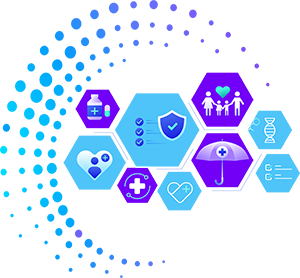FHIR Protocol and its Purpose: The Opportunity For Wearable Data
Healthcare systems worldwide have long struggled with interoperability—the ability for different systems, devices, and applications to exchange and use health information seamlessly. The FHIR protocol (Fast Healthcare Interoperability Resources) was created by HL7 International to solve this problem by providing a standard framework for how health data should be structured and shared.
What is FHIR and why does it matter?
FHIR defines how electronic health records (EHRs) and other health information should be formatted and exchanged between different systems. Its core purpose is to:
Standardize healthcare data into a consistent format.
Enable secure and efficient data sharing between hospitals, clinics, insurers, and apps.
Make health data easier to access for both patients and providers.
By introducing common “resources” (like Patient, Observation, Medication), FHIR reduces fragmentation in healthcare IT systems and helps unlock innovation in digital health.
Where wearables fit in
While FHIR adoption is increasing in hospitals and clinical systems, wearable data remains largely underutilized in this ecosystem. Devices like Apple Watch, Fitbit, Oura, or Dexcom produce valuable health information—steps, heart rate, sleep, glucose, and more—but this data often sits in isolated platforms, disconnected from clinical workflows.
This presents a unique opportunity:
Bridging clinical and lifestyle data: Wearable metrics can complement traditional clinical data, offering a more holistic view of a patient’s health.
Continuous monitoring: Unlike EHR snapshots, wearable data provides ongoing insights into daily activity, recovery, and trends.
Personalized care: Integrating wearable data into FHIR-enabled systems could enable more precise recommendations and interventions.
Why the time is now
Healthcare is moving toward Medicine 3.0—a future where prevention, personalization, and data-driven decisions take center stage. For this vision to work, wearable data needs to flow seamlessly into the same standards used by the healthcare ecosystem. FHIR is the bridge.
How ROOK enables this opportunity
At ROOK, we make wearable data usable and ready for integration into standards like FHIR. Our API connects apps and platforms to hundreds of wearables, normalizes the data, and makes it actionable. For healthcare organizations and insurers, this means:
Access to reliable wearable data without building multiple integrations.
The ability to enrich FHIR-based systems with real-world, continuous health signals.
Unlocking opportunities for prevention, early detection, and personalized engagement.
Conclusion
FHIR is reshaping healthcare interoperability. But its full potential lies in going beyond clinical records—bringing in the rich, continuous insights that wearables generate every day.
By combining FHIR’s standardization with ROOK’s wearable integration, healthcare innovators can build systems that are not only interoperable but also proactive, personalized, and truly patient-centered.




